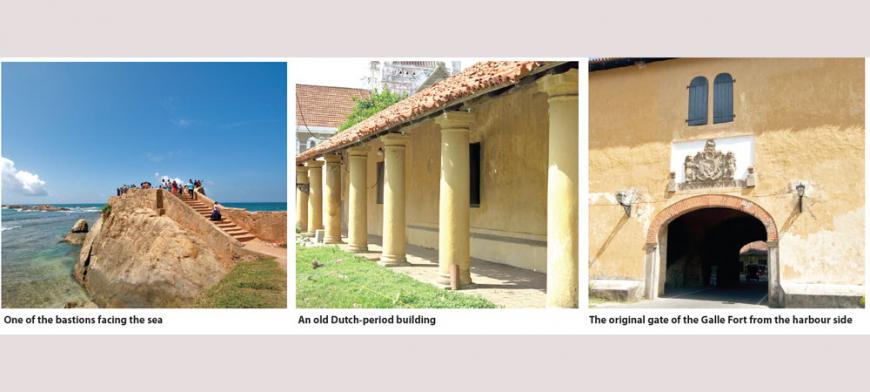
The Portuguese who arrived in Sri Lanka in 1505 took control of Galle as their centre of administration. After King Rajasingha I of Sitawaka attacked the Portuguese, they constructed a defence in Galle in 1589 to protect them from the enemies.
Ramparts and bastions
The ramparts and the bastions were built with earth reinforced with trees. There were three bastions facing the landside, which were known as St. Jago (the Sun Bastion), Conceycao (Moon Bastian) and St. Antonil (Star bastion).
There was a moat in front of the Portuguese Fort. The 36-hectare Fort was captured after a battle by the Dutch in 1640. Galle became the seat of the Dutch Governor until 1655 when Colombo was captured and the administrative centre was moved to Colombo.
The Dutch
Unlike the Portuguese, the Dutch fortified themselves against the enemy from land as well as the sea and to protect the harbour which was the most important trading harbour at that time. They replaced the ramparts of earth with granite and limestones. The Dutch also widened the moat and a small bridge was used to cross the moat.
They also built an intricate sewerage system, which was flushed by using sea-water with the aid of a windmill. There are 12 bastions around the Fort, three of them facing the land, the rest facing the sea.
There are quite a few buildings surviving from the Dutch period. The buildings which house Government institutions have basically retained their original character. Most of the private residences have expanded and changed their appearances.
Original gate
The original gate of the Fort was from the harbour side and it is still intact, with the Dutch VOC insignia carved in stone and 1669 engraved on the inner archway. According to the stone plaque embedded on the original gate to the Dutch Fort and the warehouse had been constructed between 1672-1676. A stone plaque bears ‘VOC’, the arms(the emblem) of the Dutch East India Company.
 |
|
The Lighthouse at the Fort
|
The first church constructed by the Dutch within the Fort was at the north end of the warehouse. During the Dutch period the present Kachcheri housed the hospital. The Roman Catholic Church, the Galle Museum building and the old Post Office are some of the structures which have survived to date. The Museum building which is considered the oldest surviving building was constructed around 1656.
The Dutch Reformed Church at the Galle Fort is close to the new entrance and the construction work of this church was started in 1752 and was completed two years later in 1754. The church was designed by Abraham Anthoniz of Amsterdam who was a Lieutenant of the Dutch Army. He had worked as a chief engineer while in Galle.
The British
Galle was handed over to the British in 1796 and became the administrative centre of the Southern Province. The British did not make many structural changes in Galle and most of the old structures retained their appearance. Today, the original gate of the Dutch bears the British Coat of Arms. The present main entrance to the Fort is midway in the northern rampart and was opened by the British in 1873.
The Lighthouse WAS constructed in 1938 after the cast iron lighthouse made in England was burnt down), the Clock Tower (built by a grateful public for Dr. P.D. Anthonisz in 1883), the Clan House (on the site of the Captain’s house of the Dutch period) are all from the British period.
World Heritage Site
The Galle Fort has been declared a World Heritage Site by the United Nations Educational, Scientific and Cultural Organization (UNESCO).
